Latest Global NCAP tests reveal made-in-India cars can be made safer
While the new Maruti Ertiga gets a three-star rating, the Wagon R and Hyundai Santro manage two each and Datsun Redigo just one. But zero-star cars may be a matter of the past now
The latest round of crash tests on Indian passenger cars by automotive safety watchdog Global NCAP reveal that passenger safety is still a concern though car makers in the country are adhering to government regulations. A little over a year after Global New Car Assessment Programme (GNCAP) hosted its first-ever ‘World Congress’ in New Delhi, its sixth edition of crash tests for Indian cars and the resultant data, announced on October 31, reveal that the safety quotient for four made-in-India models — Maruti Ertiga, Maruti Wagon R, Hyundai Santro and the Datsun Redigo — are far from adequate and failed to throw up a new five-star- rated variant. While these models do meet Indian safety regulations that saw some modifications last October, the test results highlight the need for higher safety requirements.
Commenting on the latest crash tests, David Ward, CEO and president of Global NCAP, said: “The latest results in our #SaferCarsforIndia crash tests show a mixed safety performance, and disappointingly, there are no five-star performers. The Maruti Ertiga achieves a creditable three stars for both adult and child occupant protection, but it’s obvious to us that more can and should be done to improve overall protection levels for cars sold in the market. The Indian government’s crash test standards are clearly helping to eliminate any new zero-star cars from the market, and we will continue to work with them to ensure the push of regulatory requirements is complemented by the pull of consumer awareness, encouraging the demand for ever-higher levels of safety.”
Maruti Suzuki Ertiga scores three stars
The Ertiga MPV, in its new avatar, was the top scorer in the latest crash tests. A popular choice amongst Indian consumers — 85,210 units have been sold between November 2018 and September 2019 — due to its spacious offering and being a value-for-money package. This Maruti achieved a three-star rating for adult occupant protection and three stars for child occupant protection.
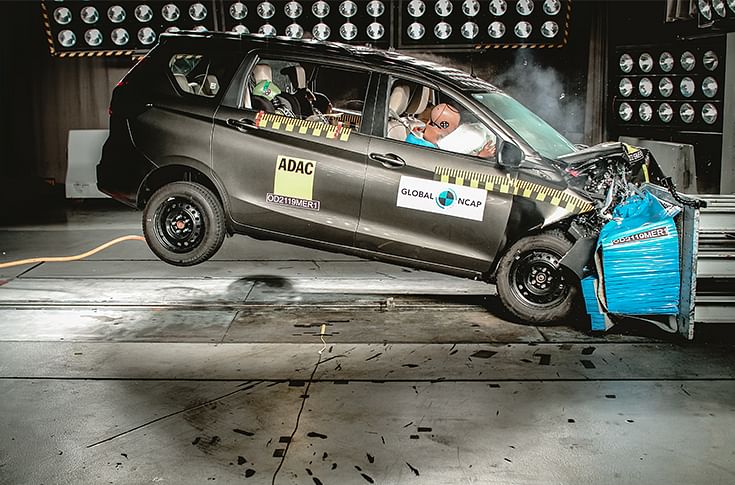
The Ertiga comes with two Seat Belt Reminders (SBRs) in the front seats as a standard. Global NCAP says, “It is surprising that this car is not offering three-point belts for all occupants.” The MPV also offers two frontal airbags as standard but the bodyshell was rated as unstable and not capable of withstanding further loading. The footwell area too got an unstable rating and pedal displacement showed risks to the driver’s legs. Head and neck protection for adult occupants was good while chest protection was marginal for driver compared to passengers.
The passenger pretensioner failed to work properly. Protection for child occupant showed poor results for the 18-month-old dummy with the CRS installation forward-facing. Global best practice indicates a rearward-facing position offers better protection for this age group. The Ertiga, however, offers standard ISOFIX anchorages. Overall, it achieved three stars for child occupant protection.
Of the Ertiga’s rivals, the Mahindra Marazzo was rated four stars while the Renault Lodgy was given a zero star rating last year.
Two stars for Wagon R
The second contender from the country’s largest carmaker and one of the Top 10 bestsellers, the Wagon R achieved two stars for adult occupant protection as well as protection of the child occupant. Though the vehicle offers driver frontal airbag as standard, its structure was rated as unstable. Its footwell and pedal displacement too got a thumb’s down and highlighted risks for the driver and the passengers.
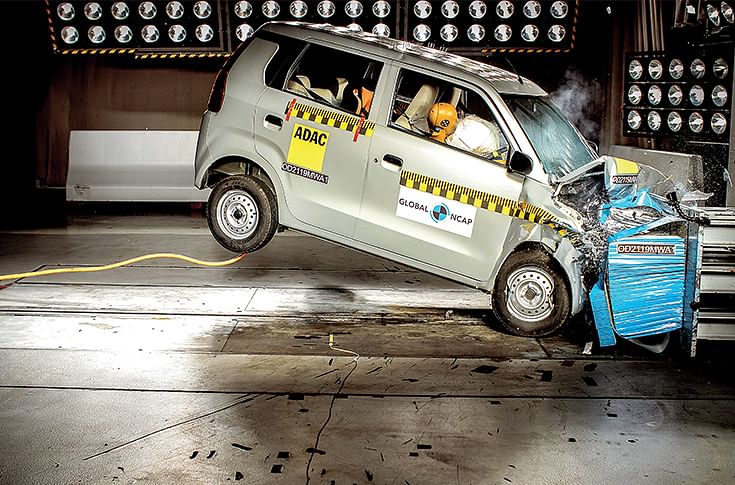
Despite good head and neck protection for front passengers, chest protection was weak and that resulted in limitations in the SBR points achieved by this model. The child occupant protection showed poor results mainly for the three-year-old dummy as its Child Restraint System (CRS) broke during the impact. Chest protection for the 18-month-old dummy was low despite being installed rearward. The Wagon R offers standard two SBRs in the front seats but its points were not considered for the final rating as the front passenger chest received weak protection. Global NCAP noted that it is surprising that the car does not offer three-point belts for all occupants.
Hyundai Santro also gets two stars
It was a poor show by the original tallboy and budget hatchback from Hyundai’s stable as well. The Santro, which comes with only the driver frontal airbag as standard, achieved two stars for adult and child occupant protection. Global NCAP rated its structure and footwell area as unstable. The head and neck protection for adult occupants was good, while chest protection was weak for both the driver and the passenger. This impacted the SBR points achieved by this model for the driver.

Global NCAP says in terms of protection of the child occupant, the hatchback showed poor results mainly because the manufacturer did not recommend a CRS for the test. The dynamic performance was poor as the head of the three-year-old dummy showed contact during the impact and highlighted limited neck protection too. However, the 18-month-old received acceptable protection.
The Santro comes with a standard driver SBR but its points were not considered for the final rating as the chest of the driver received weak protection. Like the Wagon R and the Datsun Redigo, Global NCAP says it continues to be is concerned that this car does not offer three-point belts for all occupants.
Datsun Redigo manages just one star
The Datsun hatchback was the fourth car tested by Global NCAP this year. The budget brand car from the Renault-Nissan Alliance, the Datsun Redigo got just one star for adult occupant protection and two stars for child occupant protection.
The Redigo has only one driver frontal airbag as standard. Its structure and footwell areas were rated unstable. Head and neck protection for the driver as well as passengers was rated adequate. On the other hand, the car’s chest protection was rated poor for the driver and marginal for the passenger. Global NCAP says the poor protection of the driver's chest means that there is a high probability of life-threatening injuries. Poor protection for any of the critical body regions, in this case, the chest, limits the star rating to one star for adults.
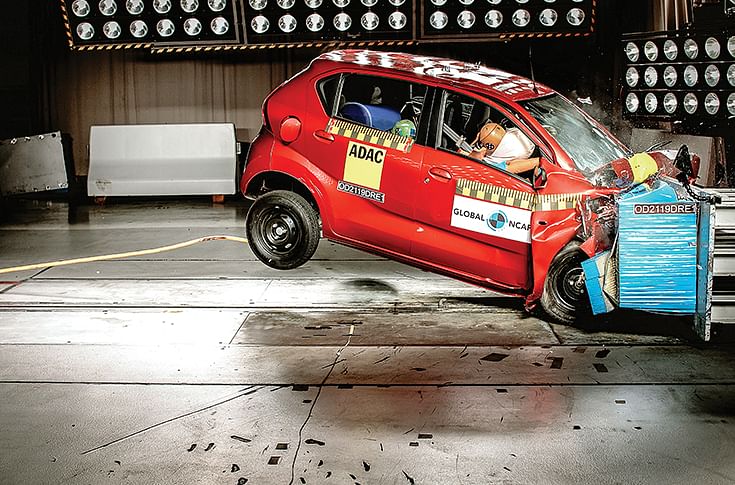
The Redigo does not offer an SBR in the front seats and, even if it had, the result would remain a single star. Child occupant protection showed poor results mainly because of the contact of the head of the 18-month-old with the front seat and for the exposed head of the three-year-old dummy during the impact.
The static rear three-point belts created difficulties in the proper and safe installation of a CRS. Global NCAP says it is surprising that this car does not come with three-point belts with automatic retractors for all occupants.
Global NCAP test: a combination of factors
Global NCAP awards a separate child safety rating to each car in order to highlight the different levels of protection vehicles provide to passengers on the rear seats. It tests a combination of the car and the child seat recommended by the car manufacturer. That’s because this is the only safe way for young children to travel. The assessment also takes into consideration the compatibility of the recommended child seats with the car as well as the protection provided in the crash test.
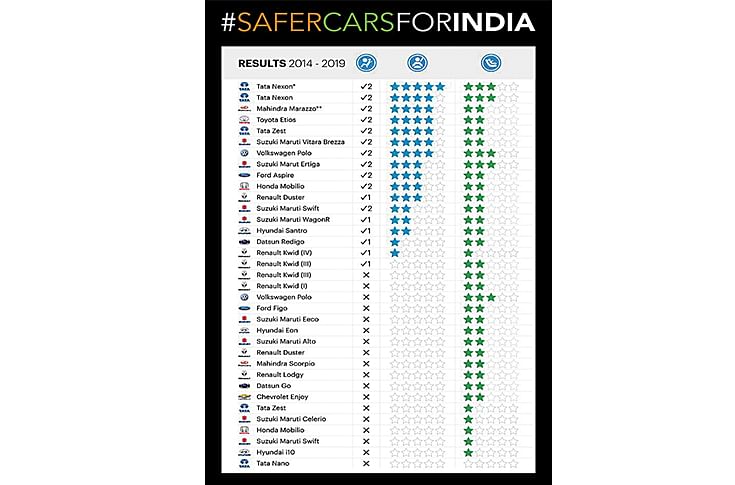
According to Global NCAP, the four tested vehicles offer ISOFIX as standard which is a desirable improvement; however, the different tests showed poor performances of the CRS in terms of child occupant protection. Airbags are not a substitute for seatbelts, passengers must always wear seatbelts. None of the models offered three-point seatbelt for all passengers. Lap belts in the middle position make it impossible to properly and safely install a CRS and offer much lower protection than a three-point belt for adults.
Global NCAP typically crash tests cars at 64kph. This is 8kph higher than the speed at which cars are tested for safety certification in India. It argues that its test speed is designed to make cars offer a higher safety margin. Speaking to Autocar Professional, Alejandro Furas, technical director, Global NCAP, says, "It's not uncommon in many places in India that cars drive at speeds of 60kph or higher."
Alejandro Furas: "Global NCAP is asking vehicle manufacturers to have the same safety standards in India as they have in Japan or in Canada. Indians deserve the same minimum protection those driving in Germany or Sweden have.'
Commenting on the star rating system, Furas says, "A car with a lower occupant safety score compared to another may get a higher star rating if the crash dummy injury point is less fatal than in the other car where a dummy may have received less injuries but may have got hurt in a very critical part like head or chest, which can be fatal."
However, a comparison of the Global NCAP crash tests starting 2014 indicates that Indian cars could well be on the right track, in terms of customer safety. The first initiative launched at the Delhi’s Buddh International Circuit (BIC) in Greater Noida was heavy on demonstrations of advanced crash avoidance technologies. The safety watchdog's first crash data for India was released in January 2014 and marked the debut of the 'Safer Cars for India' project.
How GNCAP India results impact safety awareness
In its first ever India results, Global NCAP tested five popular important models to assess their performance in the UN’s frontal impact crash test carried out at 56kph and also at the higher speed of 64kph typically used by New Car Assessment Programmes. The models included MarutiAlto 800, Tata Nano, Ford Figo, Hyundai i10 and Volkswagen Polo. The combined sales of these five cars accounted for around 20 percent of all the new cars sold in India in 2013.
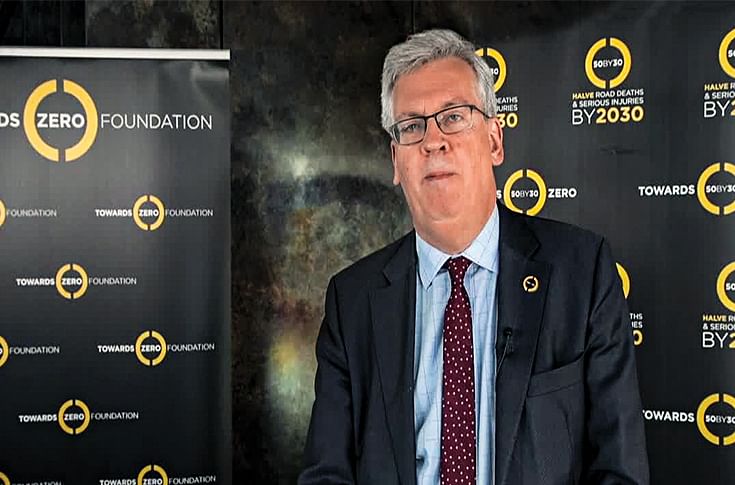
David Ward: "The Indian government’s crash test standards are clearly helping to eliminate any new zero-star cars from the market, and we will continue to work with them to ensure the push of regulatory requirements."
In November 2014, Global NCAP revealed the second set of test results which featured the Datsun Go, a new design launched in 2014, the Maruti Swift with and without airbags. Speaking at the Delhi conference, Krishan Pal, then Minister of State for Road Transport, Highways and Shipping, stressed that “safety should be required not just for cars to be exported but also those sold in India”. Also commenting on the results, Vijay Chibber, then IAS Secretary, said that the Safer Cars for India project served as “a wake-up call to industry” and outlined the government’s proposal to launch a new Bharat New Vehicle Safety Assessment Programme (BNVSAP).
The programme saw a mixed bag of reactions, with some hailing the initiative as a 'wake-up call', while some commented that 'to criticise these cars for not meeting US or European crash standards is living in a dream world'. But the gradual change in perception has not gone unnoticed. Till date the Global NCAP programme has completed 35 crash test ratings, which it says has seen positive results and has made OEMs respond to the call for end of zero-star cars. Between 2014 and 2018, Global NCAP has completed more than 29 safety assessments which have acted as an important catalyst in the safety improvement of Indian cars.
In 2015, the Central government announced that UN-equivalent crash test standards for front and side impact would be applied in India for new models from October 1, 2017 and for all cars from October 1, 2019. In addition, India also committed to apply the standard for pedestrian protection, again in two phases from October 1, 2018 and October 1, 2020.
Regulations in India currently only mandate the fitment of a driver-side airbag, which is why the Wagon R — and a number of other entry-level hatchbacks — presently get a single airbag on the entry-level variant.This, however, is set to change soon, with a Supreme Court panel directing the Ministry of Road Transport and Highways to ensure the passenger-side airbag is made mandatory as well.
India is changing as are informed consumers, who today are according more priority to safety. The Tata Nexon, the first made-in-India car to get a five-star GNCAP safety rating, has seen its sales improve considerably following its high safety quotient. Even though domestic carmakers adhere to the Indian government’s safety mandate, it would be worth their while to prioritise safety in their vehicles. These crash test ratings seek to evolve a safer eco-system for car buyers and empower them to make informed choices — which in the final analysis can prove to be life-saving ones.
(This article was first published in the November 15, 2019 issue of Autocar Professional)
RELATED ARTICLES
Why Toyota Is Building Its Carbon-Neutral Future Around India
A look inside the engineering logic driving the world’s largest carmaker as it pursues multiple routes to decarbonisatio...
ZF’s Construction Equipment Strategy Reveals How India Has Moved Beyond the Auto Market
ZF's leadership sees the construction equipment sector as an anomaly, a segment that, despite its current sluggishness, ...
India Breaks Into Exclusive Auto Export League With Over 5 Million Units Shipped
From a tentative, low-cost production centre, India has emerged as a reliable manufacturing destination for automobiles ...






 27 Dec 2019
27 Dec 2019
 10071 Views
10071 Views




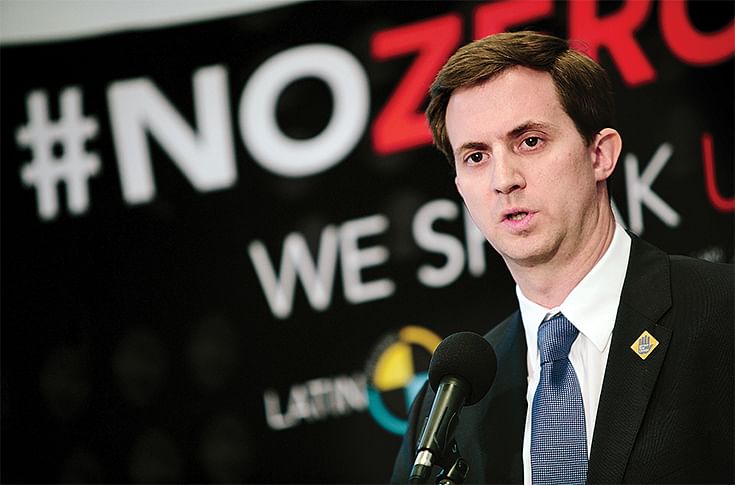

 Ketan Thakkar
Ketan Thakkar


 Shahkar Abidi
Shahkar Abidi


